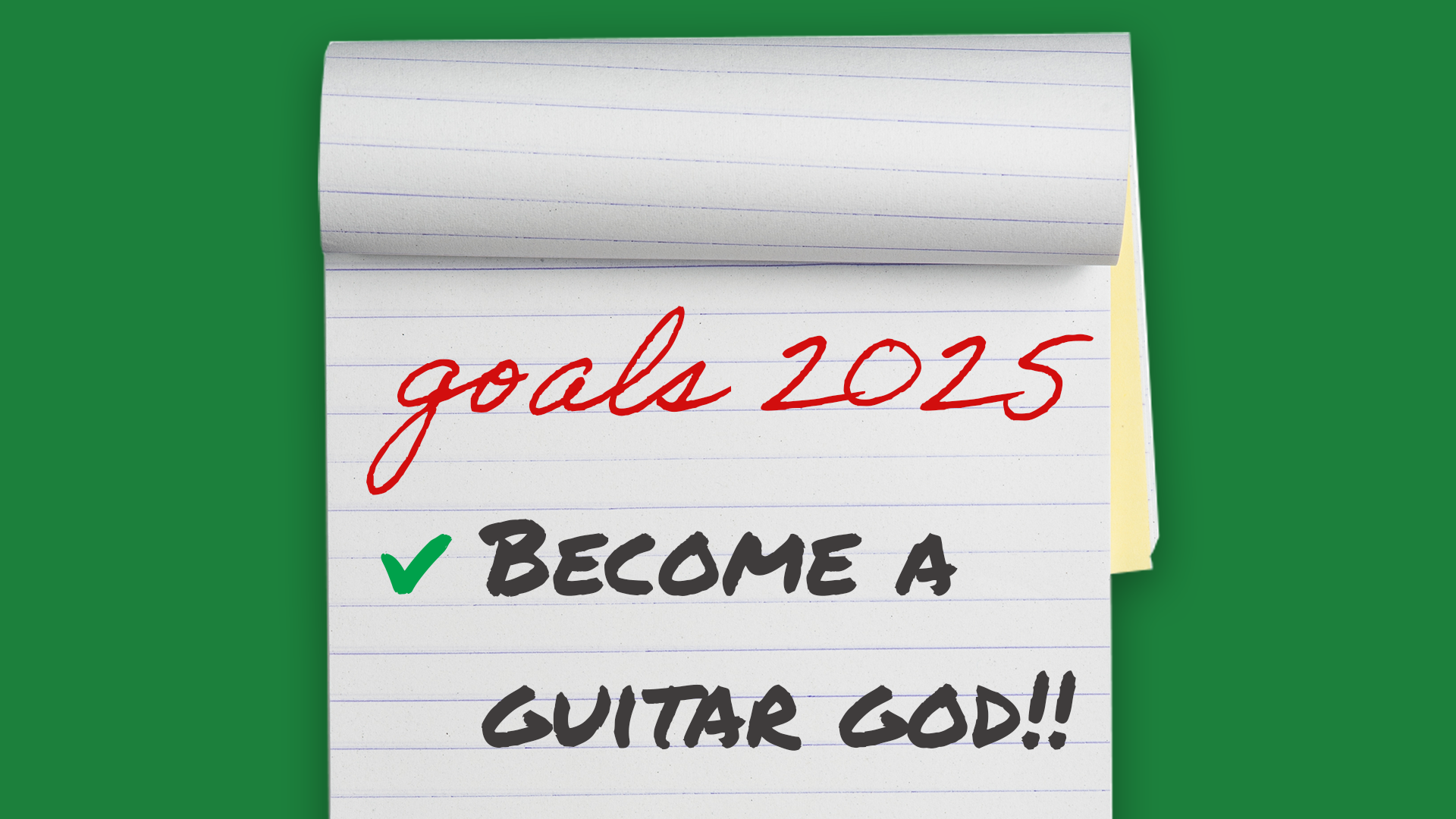How to practice effectively
Beginner Guitar Essentials Lesson 6
This series of lessons will set you up for success on the guitar. You’ll learn what to focus on as a beginner, what to ignore, and how to structure your practice so you can start using what you’re learning to play songs as quickly as possible!
Have a goal for each aspect of your practice
Properly understanding this point can save you a huge amount of frustration. I’ve seen so many students get discouraged and consider giving up because they don’t keep this in mind!
When you’re learning the guitar, it’s important to remember that your objectives change as you begin to practice different things. If you’re judging your performance based on what success looks like in one area, when it requires a different metric of success, you can easily get discouraged. Even if you’re actually making excellent progress!
For example, the metric of success you need to use when practising your chord progressions is entirely different from the metric of success you need to use when playing your chords.
Mental bandwidth
Mental bandwidth is the idea that you only have so much attention to spread across different things you need to focus on while you are playing the guitar.
When you’re starting out, you’ll often need all your attention for one aspect of your playing. As you begin to incorporate another aspect of guitar playing (e.g. strumming after only practising chords), your total attention will have to be split between multiple things. Something is going to get compromised.
You might have needed 100% of your attention to play your chords clearly. But as you start strumming you realise that you have to shift 80% of your attention to your right hand. You needed 100% for chords, but now they are only left with 20%! It makes sense that they are not going to sound as good.
In this situation, it’s important to keep the concept of mental bandwidth in mind so you don’t get discouraged. This doesn’t mean you’re making backwards progress on your chords. Instead, you’re increasing your capacity. Expect this to happen and feel good about the progress that you’re making on your strumming.
As you get better at each thing, both will require less attention. You’ll get to the point where you only need 50% of your attention for each thing. At that point, they will both sound fantastic!
Don’t get discouraged by how your chords sound when you’re working on your chord changes in the context of a chord progression. I’ve seen so many students get so discouraged because their chords didn’t sound good that they missed the amazing progress they were making with their strumming!
Enjoying the lessons?
This series of lessons is test footage from the first part of our upcoming beginner guitar course. These lessons are all from the first of 10 sections that will help you form a rock-solid foundation when you’re starting out as a beginner guitar player.
If you’ve got any feedback on the material, please leave a comment. I’d love to hear what you think!
And, if you want to be one of the first to hear when the new course drops, make sure you’re signed up for the Guitar Nutrition newsletter.
In the next part of this lesson series, we’ll go over how you can never simplify too much when you are learning the guitar.



